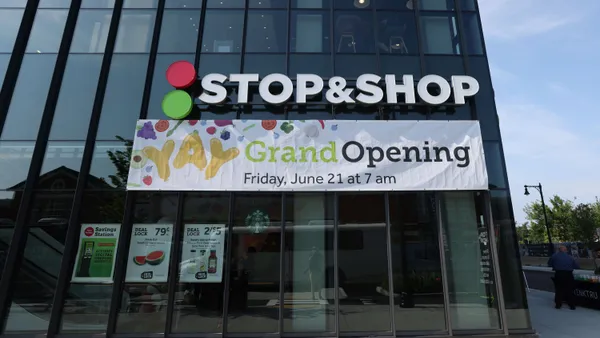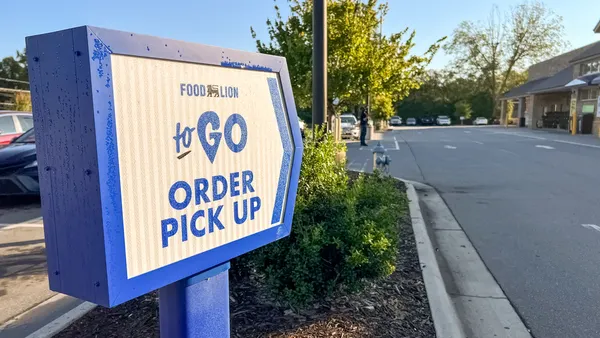Dive Brief:
- Uber CEO Dara Khosrowshahi said that the company plans to build on the success of its Uber EATS restaurant delivery business by moving into grocery home delivery, according to Yahoo Finance. Uber Eats is at a $6 billion bookings run rate, growing over 200%, according to Yahoo.
- Walmart ran a delivery pilot with Uber earlier this year, but the retailer shut down the service after just three months. In August, Walmart announced grocery delivery with Uber in the Dallas and Orlando markets.
- "We will move into grocery. That's fundamental," Khosrowshahi said at Vanity Fair's New Establishment Summit 2018 on Tuesday. "A lot more people will be eating at home. Right now we are busy with Eats, but you can see grocery as an adjacent business. We're thinking about Uber much more as a platform."
Dive Insight:
Uber is carving its way deeper into the food business — this time with grocery delivery. Its large user base and experience with food delivery via Uber Eats gives it the leverage it needs to succeed, but its failed pilot with Walmart raises questions about the company's value to retailers.
It’s not surprising Uber plans on entering the grocery space, with sales expected to hit $100 billion in the next few years, according to Nielsen and the Food Marketing Institute. Even the most conservative forecasts see double-digit sales growth in the space in the years ahead.
Uber will face competition from industry leaders Instacart and Shipt as well as other restaurant and on-demand delivery services that are moving in on grocery. Walmart is an on ramp for many of these companies as it pushes towards offering delivery to 40% of its customers by the end of this year. In April, Doordash partnered with the retailer in Atlanta and Postmates partnered with Walmart in Charlotte, N.C., soon expanding to Los Angeles, San Diego, Las Vegas, and Oklahoma City. Both of these partnerships came months after Walmart’s deal with Deliv to deliver groceries in the San Jose area.
Walmart's scrapped Uber pilot is a red flag, but the model the ride-sharing service used isn't likely to be the same one it'll use going forward. Uber Rush, as that service was called, was first announced in 2015 and delivered groceries and riders at the same time. According to Tech Crunch, Uber phased out the service after finding it was very difficult to meet those separate demand streams at the same time.
As for its future plans in grocery delivery, Uber could extend service under its Eats brand. Or it could establish a separate division just for grocery that would partner with retailers. The company may be tempted to lump restaurant and grocery delivery together, which could be problematic given the unique needs of each. No doubt, the company will look closely at the fast-growing space while also having conversations with supermarkets and consumers.
Once established, Uber's large fleet and user base could make it very appealing to retailers. Although the company has hit some roadblocks along the way, as of late June, Uber’s U.S. adult user base is projected to reach 48 million in 2018. It has approximately 750,000 drivers, and operates in about 266 cities. Research firm Second Measure put Lyft’s market share at 27% and Uber’s at 73%, according to CNBC.
According to Finder.com, American consumers spend $177 billion on convenience services each year and roughly 45% of Americans spent $63 each month on food delivery services like UberEATS, Postmates, and DoorDash.
It’s well-known that grocery e-commerce doesn’t take up a huge chunk of overall grocery sales — only 5.5%, according to Brick Meets Click. But the industry is expected to boom in coming years and every company wants to reap the benefits, including Uber. However, in order to compete with grocery delivery pros like Instacart and AmazonFresh, the ride-sharing service will need to carefully research the market and work closely with retailers and other stakeholders.













